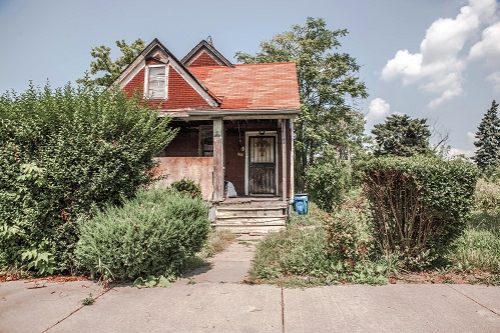The five states best prepared for a natural disaster
States tend to prepare for the natural disaster that is most frequent.
“Earthquakes can (and do) occur anywhere in the United States. The same is true for tornadoes, windstorms and floods. However, not all regions of the country are equipped equally well to confront these disasters. This is in large part due to the variable priority a given hazard is assessed, and that is prompted by a disaster’s frequency,” Rondello says.
As a result, we’ve also included the most common natural disaster, based on the number of disasters declared, in each state. It’s important to note that not all states have the same level of risk of having a disaster declared, and not all states face the same type of disaster. To help make sense of the overall risk, we’ve also included the FEMA Risk Index, which considers community preparedness as one of the factors to rate the anticipated overall impact of a natural disaster.
The national average Risk Index is 10.6 and the average Community Resilience score is 54.59. These five states have the highest Community Resilience scores.
1. Minnesota
- Community Resilience score: 59.1
- Risk Index: 8.57
- Most common disaster: Flood
Minnesota’s Community Resilience score is the highest in the nation, and its Risk Index falls below average as well. Since 1953, Minnesota declared a disaster for 29 floods, making it the most common natural disaster in the state. The predictable nature of spring flooding due to snow melt likely contributes to the state’s preparedness.
2. District of Columbia
- Community Resilience score: 58.89
- Risk Index: 14.99
- Most common disaster: Severe storms
Despite having the highest overall Risk Index out of the top five, D.C. is number two for community resilience. Because risk is inversely proportional to community resilience in FEMA’s scoring, D.C.’s risk would have been a lot higher if it weren’t for D.C.’s high level of preparation. The most common disaster in D.C. is severe storms, with nine disasters declared since 1953.
3. Iowa
- Community Resilience score: 57.9
- Risk Index: 10.82
- Most common disaster: Severe storms
Iowa’s Risk Index lands just above the national average, and the state has declared 31 natural disasters for severe storms since 1953. That’s the highest number in the top five list. Iowa also declared 29 flood disasters during that time. Despite those risks, Iowa ranks as the third most prepared for a natural disaster with a resilience index of 57.9.
4. Connecticut
- Community Resilience score: 57.72
- Risk Index: 8.76
- Most common disaster: Hurricanes
Connecticut is the only state to land in the top five most prepared when hurricanes are the most common natural disaster. Hurricanes have caused the state to declare 14 disasters since 1953. Connecticut has a below-average Risk Index, however, that means it’s likely to be prepared and recover well the next time a hurricane strikes.
5. Massachusetts
- Community Resilience score: 57.21
- Risk Index: 10.06
- Most common natural disaster: Severe storms
With a Risk Index that’s right on the national average, Massachusetts takes the No. 5 spot for preparedness. Severe storms beat t hurricanes as the most common natural disaster, with 12 and 11 disasters declared, respectively.
The five states that are the least prepared for a natural disaster
These states have a few things in common. Four out of five are in the western part of the country. Notably, fire is the most commonly declared natural disaster in all five, some of which have declared an enormous number of disasters over the years. The fact that fire is the top risk in these states is part of the reason these communities can’t be as prepared. Unlike floods and storms, fires are hard to predict.
“It is impossible for a state to prepare for all types of natural disasters with equal vigilance – there are real-world limitations on time, attention span, funding, and more,” Rondello says. States with many natural disasters may have to spread their resources more thinly.
1. Alaska
- Community Resilience score: 47.18
- Risk Index: 6.14
- Most common natural disaster: Fire
Alaska stands out from this list because despite having the least resilience overall, it still has a low Risk Index. In fact, at 6.14, it’s lower than the national average and lower than any of the top five most prepared states. Why? It’s likely that although only one county in the state has a Risk Index above the “relatively low” ranking, Alaska’s terrain, location and weather make responding to disasters more difficult when they do happen.
2. Nevada
- Community Resilience score: 48.6
- Risk Index: 16.26
- Most common natural disaster: Fire
Nevada’s dry, hot climate easily makes fire the most common natural disaster in the state. Nevada has made 75 natural disaster declarations for fires since 1953, far outstripping any other natural disaster in the state. On the California border, Washoe County has the highest Risk Index in Nevada, pushing the entire state into a higher Risk Index. The lower Community Resilience score means Nevada is likely to struggle more to recover.
3. Hawaii
- Community Resilience score: 49.72
- Risk Index: 18.01
- Most common natural disaster: Fire
Although Hawaii makes most people think of volcanoes, only four disasters have been declared since 1953 due to eruptions, while 20 fires have resulted in a disaster declaration. Hawaii’s remote location and island terrain likely impact the difficulty of responding to a disaster.
4. Arizona
- Community Resilience score: 49.77
- Risk Index: 23.68
- Most common natural disaster: Fire
Arizona has the second-highest overall Risk Index of any state. That means it’s highly likely to be adversely impacted by a natural disaster and will have a hard time recovering. Arizona has declared 73 disasters due to fires since 1953, and it’s by far the most common disaster in the state. Neighboring California has declared 278 fire disasters in the same time frame, and while it takes the number one slot in terms of the Risk Index, it stays well out of the top five thanks to higher community resilience.
5. New Mexico
- Community Resilience score: 51.8
- Risk Index: 14.23
- Most common natural disaster: Fire
New Mexico, another state with many fires, takes the No. 5 slot for community resilience. Sixty-five fires have been declared disasters since 1953. With a Community Resilience score a full point ahead of Arizona, New Mexico’s greater preparedness helps the state land an overall Risk Index that’s almost 10 points lower.
How prepared is your state for a natural disaster?
Find your state on the map below to see the average FEMA Community Resilience and Risk Indexes and the most common natural disaster.
| State | Average risk index, all counties (FEMA) | Average community resilience index, all counties (FEMA) | Most common natural disaster (FEMA) and # of disaster declarations since 1953 |
|---|---|---|---|
| Alabama | 10.97 | 53.02 | Severe storms (43) |
| Alaska | 6.14 | 47.18 | Fire (25) |
| Arizona | 23.68 | 49.77 | Fire (73) |
| Arkansas | 12.9 | 52.53 | Severe storms (28) |
| California | 28.1 | 52.85 | Fire (278) |
| Colorado | 7.93 | 53.12 | Fire (76) |
| Connecticut | 8.76 | 57.72 | Hurricane (14) |
| Delaware | 13.24 | 56.53 | Hurricane (10) |
| Florida | 19.65 | 52.71 | Fire (67) |
| Georgia | 8.36 | 53 | Severe storms (16) |
| Hawaii | 18.01 | 49.72 | Fire (20) |
| Idaho | 8.2 | 52.36 | Fire (22) |
| Illinois | 9.87 | 56.7 | Severe storms (25) |
| Indiana | 8.66 | 55.55 | Severe storms (24) |
| Iowa | 10.82 | 57.9 | Severe storms (31) |
| Kansas | 9.58 | 52.28 | Severe storms (39) |
| Kentucky | 8.65 | 53.81 | Severe storms (32) |
| Louisiana | 12.85 | 55.9 | Hurricane (36) |
| Maine | 8.72 | 56.91 | Severe storms (22) |
| Maryland | 9.72 | 56.59 | Flood (10) |
| Massachusetts | 10.06 | 57.62 | Severe storms (12) |
| Michigan | 7.65 | 55.31 | Flood (12) |
| Minnesota | 8.57 | 59.1 | Flood (29) |
| Mississippi | 11.56 | 53.14 | Severe storms (38) |
| Missouri | 11.13 | 54.75 | Severe storms (37) |
| Montana | 6.83 | 54.43 | Fire (64) |
| Nebraska | 9.43 | 56.36 | Severe storms (33) |
| Nevada | 16.26 | 48.6 | Fire (75) |
| New Hampshire | 7.43 | 56.57 | Severe storms (23) |
| New Jersey | 16.92 | 56.68 | Severe storms (18) |
| New Mexico | 14.23 | 51.8 | Fire (65) |
| New York | 11.42 | 56.94 | Severe storms (28) |
| North Carolina | 13.57 | 54.41 | Hurricane (33) |
| North Dakota | 6.17 | 57.21 | Flood (32) |
| Ohio | 8.47 | 56.84 | Severe storms (24) |
| Oklahoma | 12.36 | 53.45 | Fire (106) |
| Oregon | 15.53 | 53.29 | Fire (100) |
| Pennsylvania | 8.79 | 56.8 | Flood (26) |
| Rhode Island | 7.51 | 57.16 | Hurricane (10) |
| South Carolina | 12.78 | 53.7 | Hurricane (17) |
| South Dakota | 8.01 | 57.1 | Severe storms (31) |
| Tennessee | 10.14 | 53.52 | Severe storms (36) |
| Texas | 12.89 | 52.3 | Fire (258) |
| Utah | 7.27 | 54.19 | Fire (33) |
| Vermont | 11.42 | 56.94 | Severe storms (25) |
| Virginia | 6.5 | 54.92 | Severe storms (18) |
| Washington | 14.56 | 52.99 | Fire (128) |
| Washington D.C. | 14.99 | 58.89 | Severe storms (9) |
| West Virginia | 7.33 | 52.49 | Flood (31) |
| Wisconsin | 7.34 | 56.91 | Severe storms (20) |
| Wyoming | 6.15 | 51.91 | Fire (22) |
*Some state rates will vary based on the addition of a hurricane deductible and may be much higher when included.
What can you do to prepare for a natural disaster?
Your state has disaster resources available, but do you know what they are?
“Individual states have become more resilient with well-developed, comprehensive disaster mitigation and response plans spearheaded by experienced, well-educated, seasoned Emergency Management professionals. Unfortunately, these plans are often not well communicated to the public. Frequently, most laypeople don’t consider the importance of understanding their state’s preparations,” Rondello says.
In addition to educating yourself on state and county-level preparedness plans, you can take steps to make sure you and your family are ready when disaster strikes.
“While there will likely be federal, state and local resources available to assist in your disaster recovery, they should never be relied upon for sole support. These assets will inevitably be overburdened, incomplete and delayed in arriving. To the greatest extent possible, individuals should strive to be self-sufficient in their disaster mitigation planning,” Rondello says.
Ready.gov offers tips to help you prepare:
- Make a plan. Using the simple disaster plan form provided, you can make sure the entire family has contact information and knows what to do and where to go. Discuss the plan with everyone in the family.
- Know the risks. Know which type of disaster is likely to strike your area so you can make specific preparations.
- Build an emergency kit. Start today and add to your emergency kit over time to keep the expense down. Include fresh water, non-perishable food (and a way to open it), blankets and clothes, supplies of any needed prescriptions, a first aid kit, batteries and a flashlight and copies of vital documents.
"[People] should also be prepared to leave on a moment's notice with enough cash on hand as well as a quick, ready-to-go bag with essential supplies," Derham says.
You can also prepare months and years ahead of time by making sure your home is prepared. "A lot of wildfire mitigation can be done as DIY, especially landscaping properly to make a significant potential impact on reducing fire risk," Giammanco says.
Make sure that you have the right insurance to protect you in the event of a disaster. While standard home insurance policies cover things like storms, they don’t cover floods or earthquakes. And in some states, windstorms or hurricanes require separate coverage.
"Protecting your property also includes making sure you understand how your insurance may or may not help cover damage caused by severe weather," Tanya Robinson, Associate Manager with Allstate, says.
Talk to your insurance company to be sure you have the coverage you need before you need it.
“During [the] non-disaster/inter-disaster period, individuals have the greatest opportunity to harden their homes, become more resilient and prepare for a variety of different hazards,” Rondello says.
Methodology
To rank states for disaster preparedness, Insurance.com used FEMA’s Community Resilience score, which rates states for their ability to respond to and reduce the impact of a natural disaster. FEMA’s National Risk Index, which is calculated using the Community Resilience score, was also used to present overall risk. The average score in each category across the state was used for ranking. The most common disaster in each state was sourced from FEMA’s Disaster Declarations for States and Counties.
Sources:
- Climate.gov. "2024: An active year of U.S. billion-dollar weather and climate disasters" Accessed August 2025.
- Yale Climate Connections. "U.S. socked with 15 billion-dollar weather disasters in the first half of 2025." Accessed August 2025




